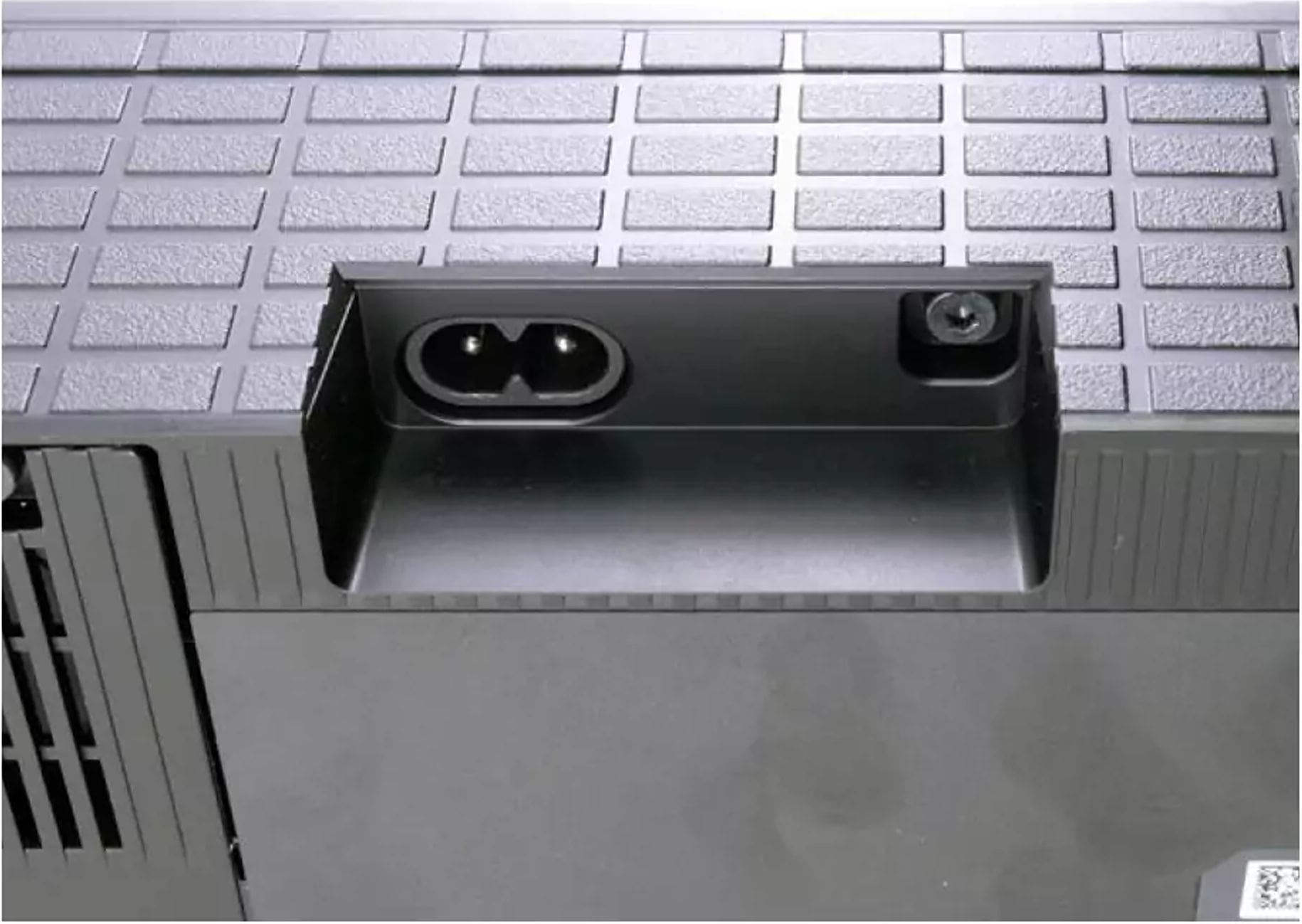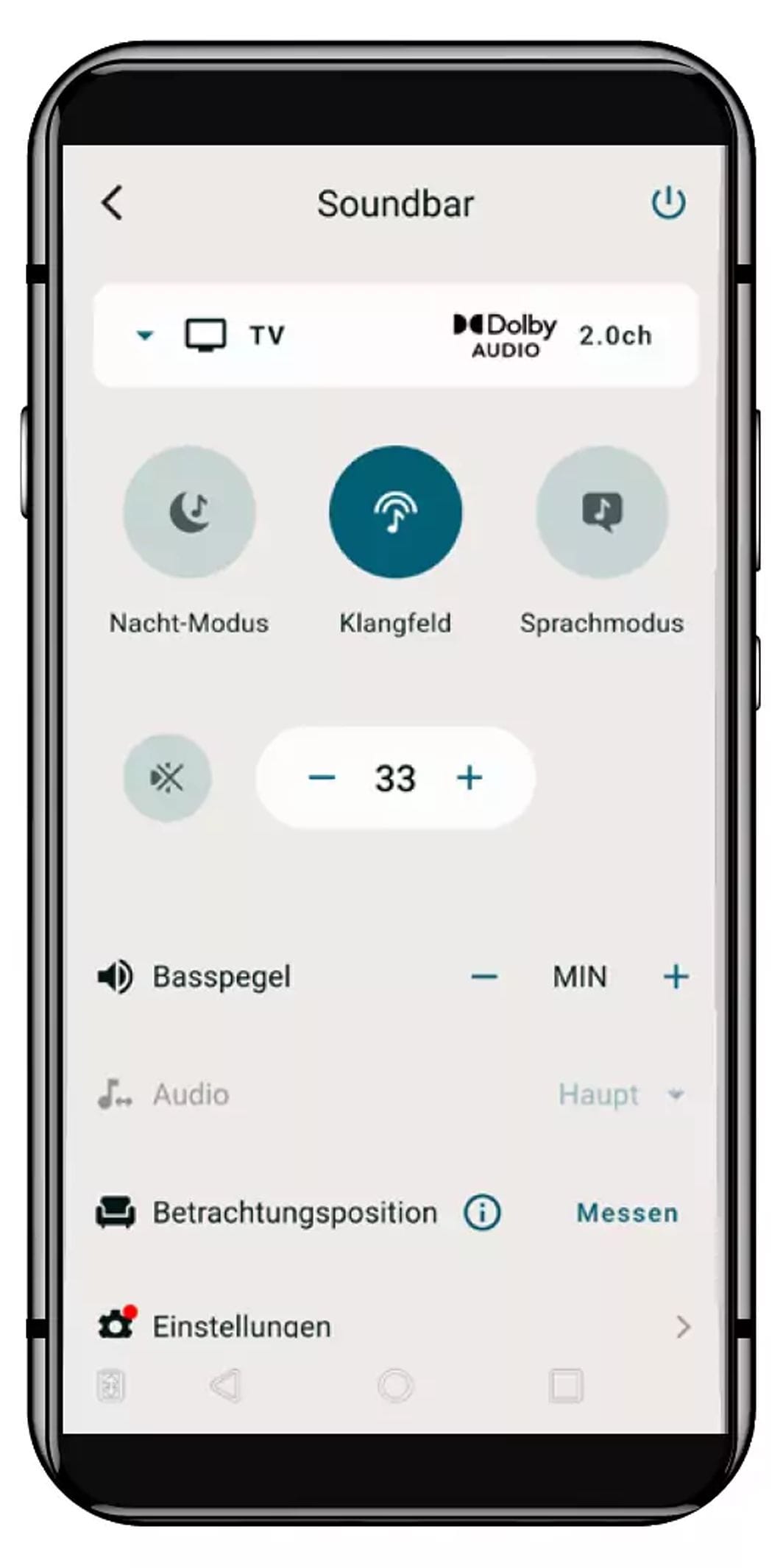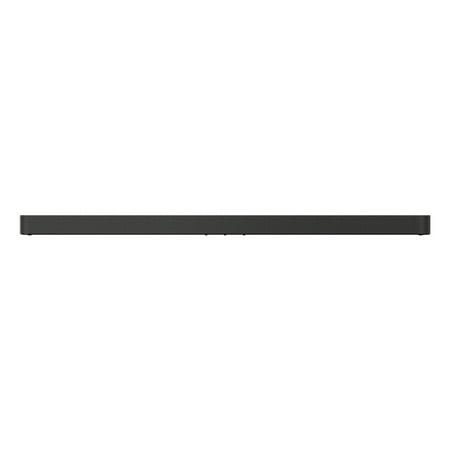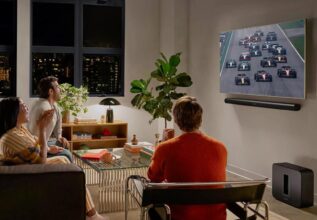Sony Bravia Theatre Bar 9 Review
When it comes to enhancing the sound quality of your TV, many audio enthusiasts opt for a classic soundbar, as it offers a noticeably better sound experience in a simple and relatively affordable way. However, the Sony Bravia Theatre Bar 9 (HTA9000) offers much more than that.
It is a complete all-in-one music solution featuring 13 speaker units. Combined with the 360 Spatial Sound Mapping function, this premium soundbar goes far beyond regular surround sound, promising an immersive theater-like experience. The 7.0.2 system also includes key features such as Bluetooth 5.2, built-in Wi-Fi, two HDMI ports, and app control.
Our detailed review explores the available connections and sound formats offered by the soundbar. We also look at the power consumption, whether the system can be expanded with an external subwoofer or additional rear speakers, the extra features available through the app, whether the sleek soundbar has a full display, and how the sound quality holds up in practice.

The flagship soundbar from Sony, packaged entirely in eco-friendly paper and cardboard, features a sleek and classic design that may not reinvent the wheel visually but still appears fresh and modern at first glance. Measuring 130×6.4×11.3 centimeters (WxHxD), it is as wide as its predecessor, the HT-A7000, but with a lower height and depth, making it easier to place in front of most TVs or on a TV stand.
However, all necessary components for wall mounting are also included. Two feet can be attached to the bottom for a raised setup, which is recommended if your TV has a central stand that might otherwise get in the way. The soundbar weighs around 5.5 kilograms, underscoring its excellent build quality. The bar-shaped audio expert is entirely black, with the front, sides, and top covered in acoustic fabric. The smooth back, like the rest of the body made of plastic, features an interesting tile design and houses the available connection options in two recesses.
The left recess, no bigger than an AA battery, contains only the power port, while the right houses an HDMI TV output (ARC/eARC) that passes through signals up to 120 Hz in 4K or 60 Hz in 8K, an HDMI input, and an S-Center speaker connection. A USB port on the flat rear section is for service purposes only. Unfortunately, physical inputs like an optical S/PDIF connection or a USB port for music playback are missing.
Minimalism also applies to physical control elements; the only button is a slim standby button on the rear right side, which can be used to power the unit on/off or perform a full reset if needed. For everything else, the included infrared remote control is necessary, which is very compact but features all essential buttons to control volume or adjust bass levels.

Sony Soundbar: The Dolby Atmos soundbar from Sony is mostly made of plastic but is covered with dense acoustic fabric on more than half of its surface, giving it a premium look. Only the underside and the rear, which has a modern tile pattern, are left uncovered. In operation, two LEDs light up on the front right, indicating volume adjustments or an input source change in a minimalist way. The only physical control element is a slim standby button on the rear right side, which can also perform a factory reset.
“All-in-One Sound System with 13 Built-in Speakers for Cinema-like Surround Sound”
The unit houses a total of 13 speakers, distributed across the front, top, and sides, projecting sound in all directions, meaning it should not be placed inside a cabinet or similar enclosure. The speakers consist of four 45 x 90 mm cone mid-woofers for the front channels, a 22 mm center tweeter with a fabric dome, two 46 x 54 mm cone mid-tweeters for height channels, two 46 x 54 mm cone mid-tweeters for side-firing surround channels, two 16 mm beam tweeters with fabric domes, and two 10 mm front tweeters with fabric domes. Two passive radiators are also located on the top.
Altogether, this results in a total output of 585 watts. Unfortunately, the manufacturer did not provide details on the frequency range covered by the speakers. We missed having a full display to show information like the selected input or volume level. Instead, there are just two small LED lights on the far right of the front panel, divided into a white sub-status and a colored main status display. The former indicates the speaker system’s status through white lighting or blinking, while the color of the main display at least lets you identify the selected input source. White stands for TV input (eARC/ARC), green for the second HDMI input, blue for Bluetooth, and light blue for network input.
Setup
One of the main advantages of a soundbar is the simple setup, which usually requires no special knowledge. In our case, connecting the respective HDMI ARC/eARC ports on the TV and the Dolby Atmos soundbar using the included HDMI cable and selecting the appropriate input source was sufficient. It’s important to note that there is no alternative optical S/PDIF connection, so a TV or HDMI switch with an ARC/eARC port is mandatory for operation.
However, the additional HDMI input allows you to connect external source devices like a gaming console or satellite receiver. The soundbar also features an “S-Center-Out” connection, found in the Sony HT-A5000. This allows compatible Sony TVs with “S-CENTER SPEAKER IN” to be integrated as a center speaker in the sound system, making dialogue sound more natural, especially due to its proximity to the screen. The necessary connection cable is also included.
Control and Features
Since, as mentioned, the soundbar itself has no control elements aside from a standby button, control is primarily done via the slim infrared remote control, which has buttons for volume control and input source selection, as well as buttons for activating night and voice modes and the Sound Field function, which creates a significantly wider soundstage. In everyday use, the remote control is sufficient, although the lack of a real display can be problematic as users have no visual indication of whether the mentioned features are active or not, or what the current bass or volume level is.
Therefore, it is worth using the free “Bravia Connect” app, especially at the beginning. This requires a free registration and account linking. In addition to various manual audio and video settings, the app allows for automatic room calibration, optimizing the sound according to the room’s dimensions and seating position using the microphone on your smartphone.
Furthermore, the app provides basic information, such as the currently used audio format, volume level, or activated sound modes, which can be changed just like on the remote control. This compensates for the lack of a display and allows full control, just like with the remote. If you own a current Sony TV, you can even make further sound settings directly from the TV menu (from XG95, XG85, Z9G, and AG9 series, model year 2019).

Remote Control: The compact black infrared remote control included in the package is made of robust plastic and allows control of the most essential functions, mainly input source selection and volume control. The individual buttons have a pleasant tactile feedback and are clearly labeled. With a range of over eight meters, it can be operated without any issues from a typical sofa distance.


Connections: The relatively few connection options can be found primarily in the right recess on the back. These include an HDMI 2.1 ARG/eARG port, an HDMI input, and an S-Center output. Outside the recess, there is also a classic USB port, but it is solely intended for service purposes.

Sony Bravia Connect App: The well-designed Bravia Connect app from Sony provides users with a quick overview of the soundbar’s selected functions. For example, it allows users to see at a glance what audio format is currently being used, whether night, sound field, and/or voice mode is active, and the current volume or bass level. A special feature of the app is the automatic room calibration, which optimizes the sound for the environment.
In addition to the physical connection options mentioned, the slim soundbar from Sony also offers true Dolby Atmos sound, a built-in Wi-Fi module (802.Ha/b/g/n/ac), Spotify Connect, Bluetooth 5.2, and AirPlay, while lacking multi-room, NFC, or voice control. For an immersive gaming experience, the HDMI input supports gaming features like VRR, ALLM, and SBTM, as well as DTS:X. The Bravia Theatre Bar 9 is also capable of playing Hi-Res audio and 360 Reality Audio content.
The latter is an object-based spatial audio technology that positions voices, vocals, and instruments with positional data in a spherical space, creating a completely immersive sound experience, similar to that of a concert. Suitable tracks are currently available on music streaming services like Amazon Music Unlimited, nugs.net, Peertracks, and Sony’s online platform 360 Reality Audio Live, though Tidal no longer offers such audio tracks since the end of July 2024.
Sound Formats and Quality
Sony’s latest Bravia soundbar model does not include the genre-specific sound modes often found on similar devices, such as rock, classical, or pop. Instead, it focuses on a voice mode for enhancing voice clarity, a night mode that reduces the intensity of loud sounds, and the “Sound Field” function, which creates a much wider soundstage.
Additionally, the bass intensity can be adjusted in three levels: min, mid, and max. For those seeking an enveloping cinematic sound experience, the compatible “360 Spatial Sound Mapping” technology is available. This technology acoustically positions speakers that are not in the correct location and replaces or adds missing speakers, creating a seamless soundscape in a 360-degree dome.
In our practical test with the UHD Blu-ray of “Godzilla vs. Kong,” this function indeed created the sensation of being surrounded by various sound effects and the overall soundscape, though not all scenes were equally precise.
However, we had little to complain about with the Sound Field feature, which even upscales regular TV stereo content into surround sound, creating a much broader and fuller soundstage. This effect also occurred during music playback, though we preferred the regular stereo playback, as it sounded more realistic and natural to us. Overall, we were impressed by the intensity the all-in-one music system could produce during film playback, making action scenes feel even more immersive.
Fortunately, this did not come at the expense of the rest of the soundscape or voice clarity, which remained intact even in chaotic scenes with many effects. Even in less action-heavy titles like “Knock at the Cabin,” which rely more on suspense and atmosphere, the Sony soundbar showcased its strengths, perfectly complementing the visual experience with sound. This also dispelled our concerns about the lack of an external subwoofer, as the Sony Bravia Theatre Bar 9 provided a powerful and perfectly coherent overall sound without one. Additionally, bass lovers can manually increase the bass to “Mid” or “High” for more impact during particularly intense sequences.
Next, we turned our attention to Bluetooth music playback, listening to tracks from various genres such as “Narcotic” by “Liquido,” “Angel” by “Massive Attack,” “Hello” by “Adele,” and “Komet” by “Udo Lindenberg & Apache 207” to get a well-rounded impression. As mentioned, we quickly switched from the artificially voluminous Sound Field mode to the more natural stereo playback, which felt much more homogeneous to us. In the mentioned test tracks, the slim soundbar consistently delivered a detailed sound image with crisp, precise bass, present midrange, and clean treble reproduction without distortion.

Thermal Imaging: After more than three hours of operation, the middle area of the top warmed up to an average of 26 to 29 degrees Celsius, with a larger hotspot on the rear left reaching a maximum of 34.0 degrees Celsius. The rear had temperatures averaging over 30 degrees Celsius, with another rectangular hotspot near the connection ports reaching a peak of 38.5 degrees Celsius.
Specifications
| Type | Soundbar |
| Amplifier Type | Digital Amplifier, S-Master HX |
| Channels | 13 channels |
| Speaker Configuration | 7.0.2 channel (13 speaker units) |
| HDMI Input/Output | 1 input, 1 output (eARC/ARC) |
| 4K Passthrough | Yes, supports up to 4K/60p/YUV4:4:4 |
| Audio Formats Supported | Dolby Atmos, DTS , IMAX Enhanced, 360 Reality Audio, LPCM (up to 7.1ch) |
| Wireless Features | Bluetooth 5.2, Wi-Fi (IEEE 802.11 a/b/g/n/ac) |
| Dimensions | 51.25″ W x 2.625″ H x 4.5″ D (1300 x 64 x 113 mm) |
| Weight | 12 lb 3 oz (5.5 kg) |
| Power Consumption | 62W |
| Sound Enhancements | DSEE Ultimate, Night Mode, Voice Mode |
| Calibration | Sound Field Optimization |
| Smart Features | BRAVIA Connect app support |
| Compatibility | Acoustic Center Sync with BRAVIA TVs, Voice Zoom 3 for improved dialogue clarity |
| Wall-mountable | Yes |
Conclusion
The Sony Bravia Theatre Bar 9 (HTA9000) proves to be a well-crafted, visually modern, and acoustically convincing sound solution for the home theater. It is also technically up to date with Dolby Atmos and DTS:X, Hi-Res audio, and 360 Spatial Sound Mapping, making it ideal for music lovers who prefer the best sound. Additional features include Bluetooth 5.2, built-in Wi-Fi, AirPlay, and an app that allows for sound space optimization.
In terms of sound quality, the 13 built-in speakers with a total output of 585 watts deliver plenty of punch, and the overall sound is well-balanced and coherent, even without an external subwoofer. There are only minor criticisms, such as the basic LED display, the few control buttons, and the limited connection options. The price is high but still within reason. This results in an overall score of 92.0 percent and the top rating of “excellent.”
| Criteria | Points | Sony Bravia Theatre Bar 9 (HTA9000) |
| Sound Quality | 50 | 95% |
| Build Quality | 10 | 95% |
| Usability | 15 | 91% |
| Accessories | 10 | 98% |
| Features | 15 | 79% |
| Price/Performance Index | 12.5 | — |
| TEST RESULT | EXCELLENT 92.0% |
When you purchase through links on our site, I may earn an affiliate commission. Here’s how it works.












